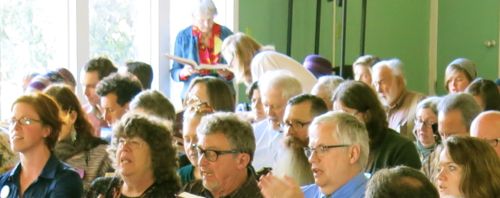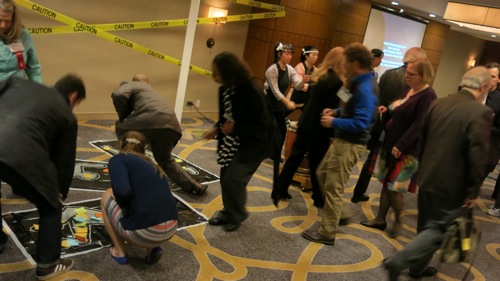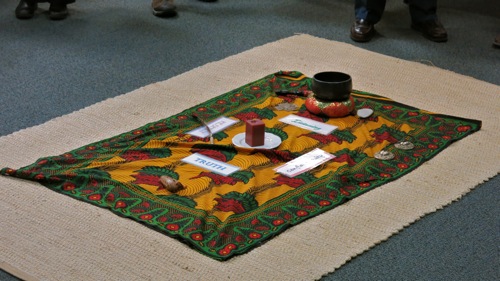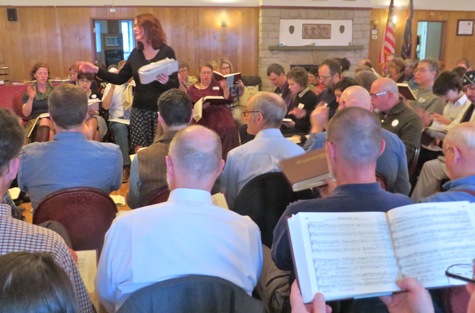On the Sacred Harp Friends page on Facebook, Katie posted a link to a blog post by Thom Schulz, titled “Why They Don’t Sing on Sunday Anymore.” Schulz’s reasons why people don’t sing in church: too often services are spectator events; church music is dominated by professionals, to the point of squeezing us amateurs out; sometimes the volume gets cranked up so high people just stop singing; the hymns are unfamiliar or hard to sing.
Katie then noted that Sacred Harp singers do sing, and we sing fervently — because there are no spectators, there are no professionals, it’s loud but not deafening, and Sacred harp singers have been singing pretty much the same tunes for a century and a half.
Actually, in my church people do sing. Amy, the senior minister, and I made a pact some years ago that the first hymn would mostly get chosen from a pool of ten or so hymns; that way, the kids can memorize ten or so hymns and know them by heart. And indeed the kids (and the adults) do memorize those hymns, and they do sing with fervor and gusto. In one recent service, I watched as one of our more cynical upper elementary kids stood on a chair, hung on to dad, and sang with utter abandon; cynicism gone, this child was completely lost in the hymn.
Given my experience, I’m with Thom Schulz: congregational singing does not need spectators, over-professionalism, blare, or crappy songs. Congregational singing can aim towards joy, towards ecstatic union with the universe through song. Congregational singing can be — should be — cynical kids belting out a favorite hymn at the tops of their voices, completely lost in the moment.






